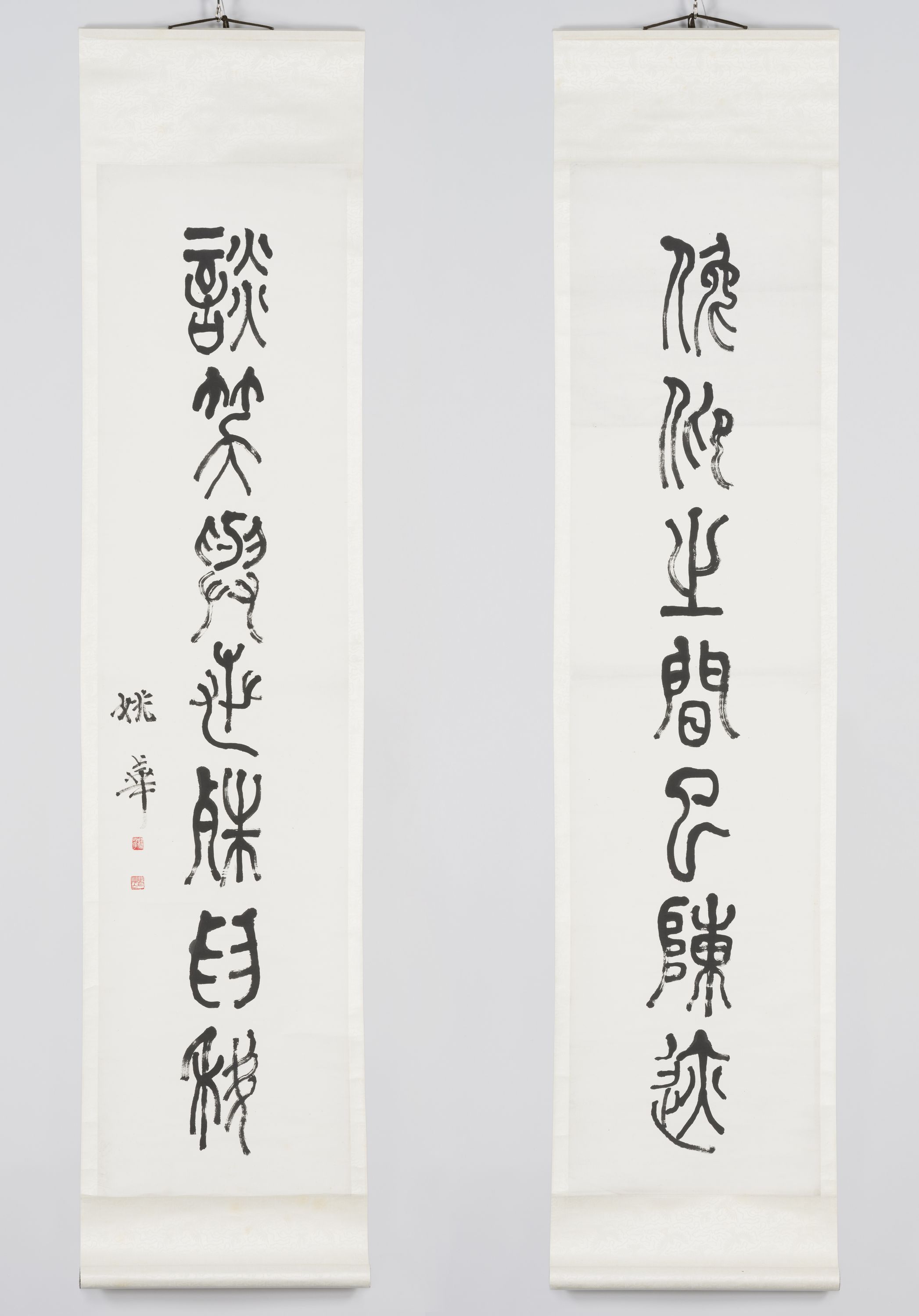
Sentences parallèles
Papier, Encre
Calligraphie
俯仰之間已陳迹
Don manuel : Barrère, Jacques; Barrère, Marie-France
M.C. 2004-17
Yao Hua was born in Guiyang in Guizhou province. Planning a career in government administration, he received his jinshi degree in 1904, and was then he was sent to Japan to study finance at the Faculty of Political Science in Tokyo. On his return to China, he served as a government official. After the fall of the Qing dynasty in 1911, he devoted himself mainly to education. He taught literature and calligraphy at various university institutions in the former capital, and was appointed rector of the Peking Women’s College of Education. Yao Hua’s artistic activities, carried out in parallel to these functions, embraced numerous fields, from poetry to theatre and from epigraphy to calligraphy, as well as painting. He came to prominence on Beijing’s artistic and literary scene between the wars along with his friend, the painter and critic Chen Shizeng (1878-1926), and other representatives of the “epigraphic” school, such as Wang Yun (1888-1934) and Chen Banding (1876-1970). In 1926, he had his first seizure, which left his left arm paralysed. Yet Yao Hua’s latter years were no less creative, in view of the number of major works signed “Yao Hua with the crippled arm”, Yao Hua canbi. He died following a second seizure in 1930.
His interest since childhood in the Shuowen jiezi by Xu Shen (58-147) led him to study the origins of Chinese writing and ancient characters, which in turn led him to seal script. He used as his model the works of Mo Youzhi (1811-1871), whose sigillary calligraphy was renowned in the province of Guizhou. The cultural climate of Beijing caused him to modify his style, taking as a model the ancient writings appearing on bronze vases, coins, terracotta fragments, steles and epitaphs in the collections of numerous art lovers in the city. He himself would boast some first-hand epigraphic sources in his own collection. His passion for seal script from the Qin period, is reflected in his study of famous inscriptions such as the Taishan keshi and the Yelang tai keshi, extended to the most modest vestiges, such as the measuring ceramic, Qin wa liang, which he wrote about. The style used in these columns of proverbs in seal script derives from these ancient models. The transcribed phrases are borrowed from Wang Xizhi and Huang Tingjian respectively. The first phrase, taken from the Preface to the Poems Composed at the Orchid Pavilion (Lanting Xu), provides an interesting reinterpretation, in seal script, of a work that is considered as the model for regular semi-cursive script.
Eric Lefebvre, Six siècles de peintures chinoises, œuvres restaurées du musée Cernuschi, Paris-Musées, 2009, p. 118-119


